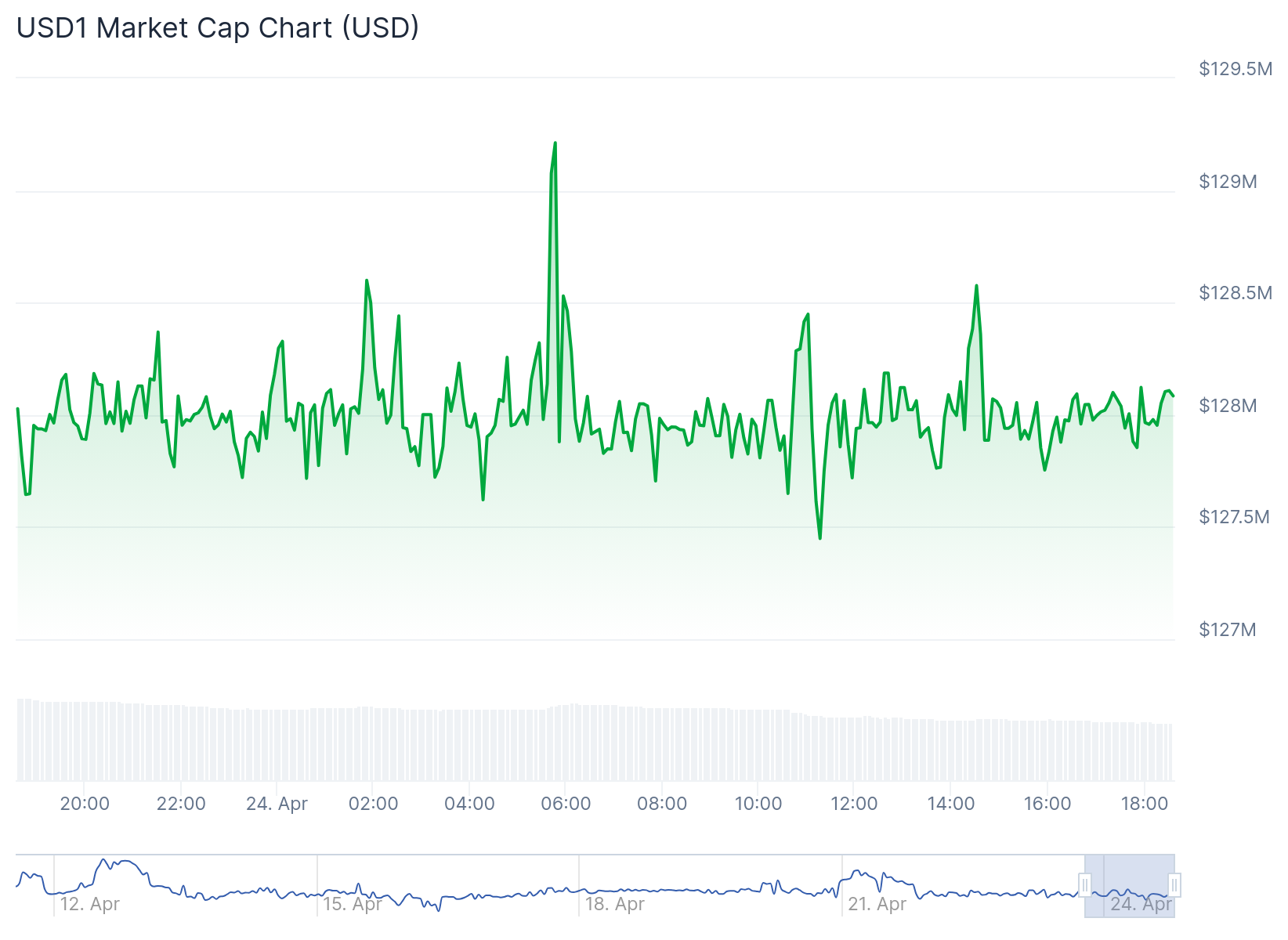-
World Liberty Financial’s USD1 stablecoin faces regulatory scrutiny in the EU under the Markets in Crypto-Assets (MiCA) framework, highlighting challenges in compliance.
-
As USD1 gains traction with a market cap exceeding $128 million, experts warn of potential barriers in meeting MiCA’s stringent standards.
-
“If USD1 wants to operate in this crypto market of 31 million users, it must ensure it meets every demand,” stated Dessislava Ianeva-Aubert from Kaiko.
This article explores the hurdles USD1 must overcome to establish a foothold in the European market, particularly under the strict requirements of MiCA regulations.
USD1 Faces Regulatory Hurdles in Europe
World Liberty Financial’s USD1 stablecoin, which aims to promote dollar dominance globally, has rapidly gained attention since its launch in late March. However, to penetrate the European market, USD1 is confronted with the comprehensive regulations mandated by the EU’s MiCA framework. Observers note that despite USD1’s promising start, the stablecoin’s future in Europe hinges on its ability to navigate these challenges effectively.
The Challenges of MiCA Compliance for USD1
MiCA sets forth clear standards that any stablecoin must fulfill to operate within the EU. These include having full reserve backing and maintaining rigorous reporting and operational protocols. Analysts point out that meeting these requirements is not just a regulatory formality, but essential for securing trust among potential users and regulators alike.
Understanding MiCA’s Reserve and Reporting Requirements
One of the cornerstones of MiCA compliance is the establishment of substantial reserves in EU-regulated banks. As indicated by experts, this could pose a significant challenge for USD1, which must ensure that at least 30% to 60% of its reserves are maintained in such banks. Furthermore, the regulation outlines transaction volume limits for non-EU stablecoins, setting a cap of 1 million daily transactions, thus requiring careful monitoring and control strategies to avoid exceeding these thresholds.
Political Implications Surrounding USD1
The involvement of prominent political figures associated with USD1 raises additional regulatory concerns. Lawmakers are keenly aware of the risks inherent in allowing a stablecoin to be connected to a sitting president’s financial interests. By emphasizing the necessity for stringent governance and transparency, the potential for conflicts of interest underscores the importance of clear operational separations within USD1’s structure.
Potential Regional Shifts for USD1’s Growth
Given the heavy regulatory demands in Europe, some industry analysts suggest that USD1 might benefit from targeting regions with more favorable regulatory environments. The Asian market, with its larger user base, presents a compelling alternative for World Liberty Financial as it seeks to promote USD1 globally without the encumbrances of MiCA compliance.
The Future Viability of USD1 in Europe’s Regulatory Landscape
Noncompliance with MiCA could jeopardize USD1’s access to the European market. Industry experts caution that without adapting to the regulatory landscape, USD1 risks mirroring the difficulties faced by other stablecoins, such as USDT, which encountered barriers in European operations.

Conclusion
World Liberty Financial’s USD1 is positioned at a critical juncture. While it shows promise with substantial backing and growing investor interest, its success in Europe will largely depend on its ability to meet MiCA’s strict regulatory standards. As USD1 looks to carve out its niche in the global economy, taking proactive steps towards compliance and transparency will be essential for securing a foothold in the competitive landscape of stablecoins.
